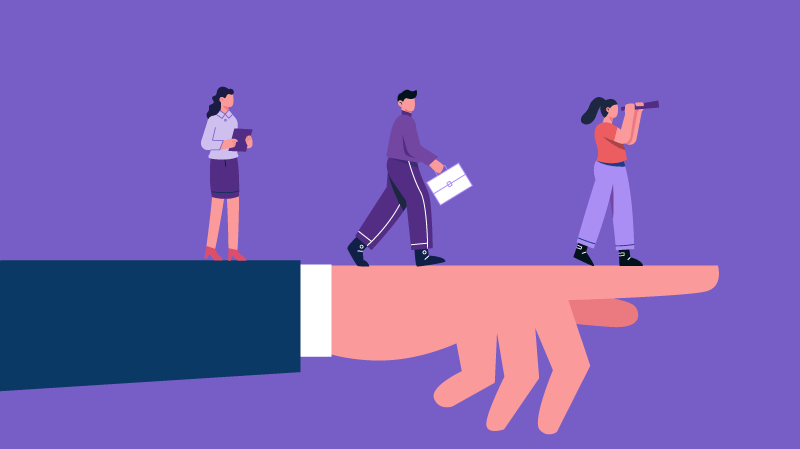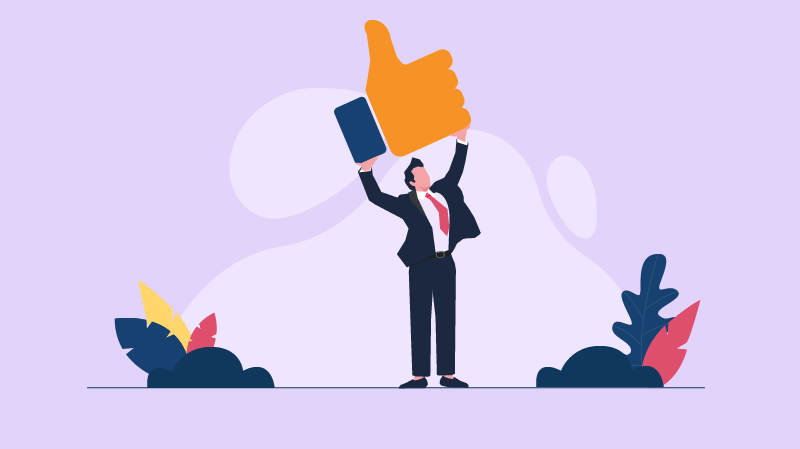Nudge Theory: 6 Simple Ways To Implement It In A Workplace
People are often stuck at crossroads, unable to decide which path to choose. Although they know the road, they need one last nudge that makes the decision easier. This is the most straightforward implication of 'Nudge Theory.'
Let me give you another example. Forcing children to clean their room or playing a game to see who can fold more shirts. Which one do you think will be more effective?
A majority of us will opt for the second option, right? This is because playing a folding game serves the same purpose as instructing but with minimal effort and an easy approach.
We come across such scenarios in the workplace too. Some questions that leaders ask themselves on a daily basis are-
- How do we deal with our employees in a better way?
- How do we make them complete a task without making it seem like an order?
- What tried-and-tested methods to motivate your people? … and many more.
Fortunately, there is available research on how to motivate your employees by using the power of science. And it even won a Nobel Prize! Sounds good, right? Let's dive straight into it.
What is Nudge Theory?
People are being nudged on different occasions if you look closely enough. Corporate nudge has become a thing, and even governments are setting up nudge units and nudge policies. But, what is Nudge Theory?
It explains how a minor feature or suggestion can influence human behavior and impact their decision-making. It is also known as "Libertarian Paternalism," which affects our choices without taking away the power to choose. It is a minor and indirect push that influences the subconscious mind to make the better decision.
This theory is a part of behavioral economics that helps to explain how psychology influences decision-making in an individual. It also explains why we choose one option over another.
This theory has been making the rounds ever since the book "Improving Decisions About Health, Wealth, and Happiness" by Richard Thaler and Cass Sustein became a major international best-seller. The groundwork of this theory was laid by Daniel Kahneman's work on behavioral science with the late Amos Tversky.
Nudge is based on positive reinforcement, and it is not forced on anyone.
If you have ever used IMDB, you'll know that a movie being "Top-Rated" makes us more inclined to like it. Or to act as if we do. It is exhibiting peer's and competitor's trust, which gets us nudged into selecting the movie.
Let us read in detail about the Nobel prize-winning concept of Richard Thaler and Cass Sunstein, the "Nudge theory."
How/Where did Nudge Theory Originate?
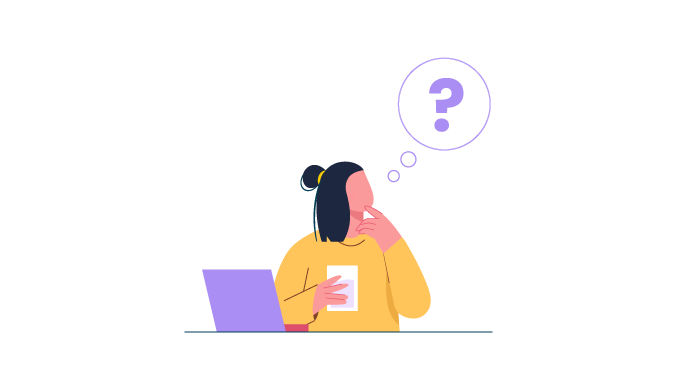
It all started with a urinal fly! Yes, you read that right. The introduction of the urinal fly led the University of Chicago's Richard Thaler and Cass Sustein to win the Nobel Prize in economics.
Back in the 1990s, a cleaning manager of the Schiphol Airport in Amsterdam was trying to reduce their cleaning costs. He simply wanted to put something in the men's urinal that can be aimed at. In this case, flies are chosen because they are not scary, and no one objects aiming at a fly.
Surprisingly, there was a massive 80% reduction in spillage and an 8% reduction in cleaning costs. And since then, a fly in the urinal became famous all over the world.
It says a lot about how a little psychology goes a long way in inspiring out-of-the-box ideas.
Nudge does not make you take a decision forcefully; instead makes the decision easy for you. It helps you decide by conditioning the environment so that your cognition will trigger you to take that particular decision.
Nudges are everywhere! The roads, the elevators, cafés, and now even in corporate offices and government buildings. We are subconsciously making decisions that the nudges are pointing at. Thus, we are getting nudged everywhere!
Can you recall one instance where you were nudged??
Classic Examples of Nudge Theory That Took The World by Storm
Like I already mentioned, nudges are everywhere. There are, however, a few classic examples of nudges that various countries and organizations have used over time. Besides being creative, they have captured the interest of the entire world by generating extraordinary results.
Let us have a look at a few of them-
1. Fly in The Urinal
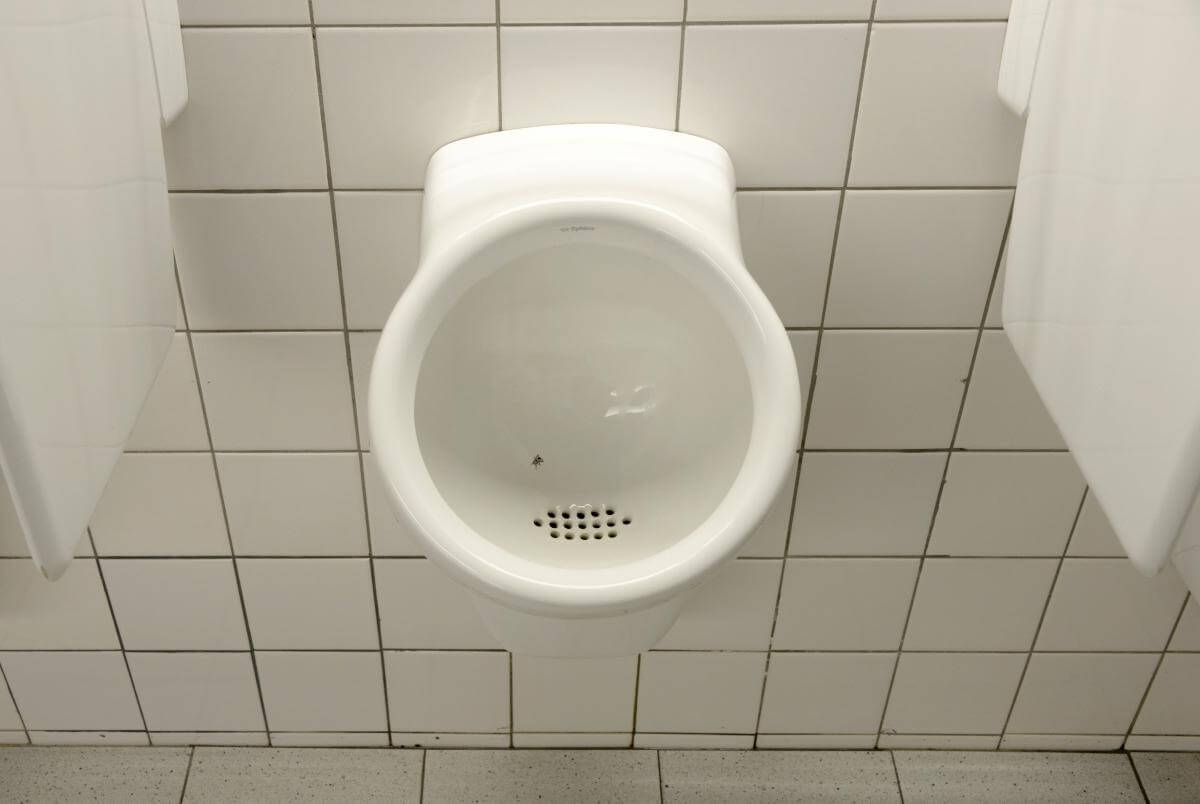
Source- (Works that work)
Although nudges were present everywhere subconsciously, the fly in the urinal changed the complete outlook of the theory. It brought the whole concept to the forefront, giving the idea a concrete form.
2. Ballot Bins in London
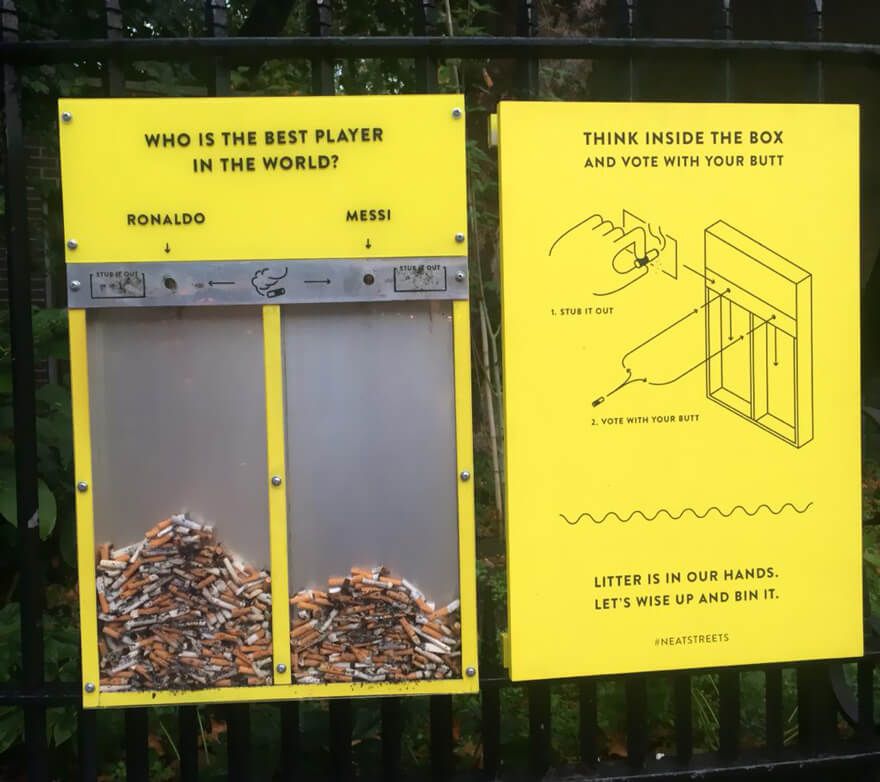
Source- (Brandingmag)
Cigarette liters are everywhere! In a shocking research by Truth Initiative, it was found that cigarette litter forms 38% of collected waste. Also, 75% of smokers tend to put out a cigarette butt after getting down from a car or simply while walking on the ground.
Hubbub came out with a ballot-bin to help minimize litter and also keep passers-by entertained. These ballot bins will have pressing questions, and a passer-by can drop their cigarette bud on the choice they want to make. A survey by the South end Council states how this has brought cigarette litter down by a good 46%.
3. The Fun and Famous Piano Stairs of Sweden
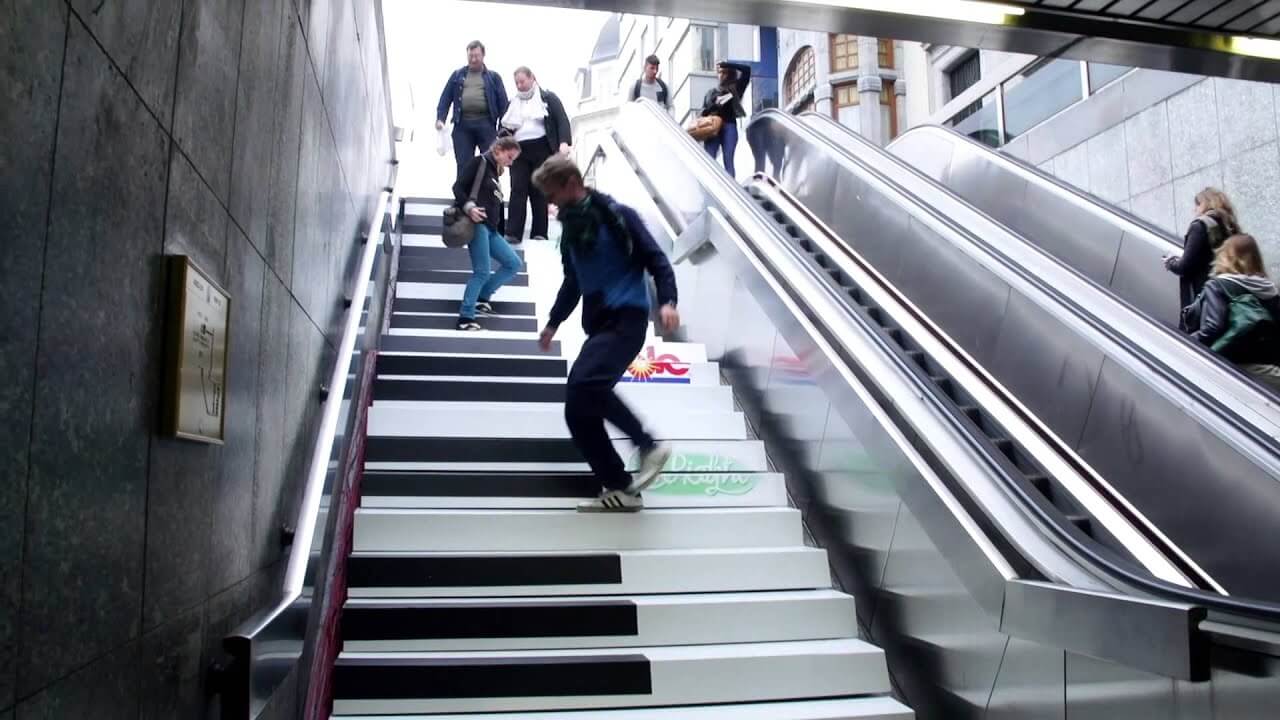
Source- (Toxel)
To do away with elevators and promote more usage of stairs, Sweden developed the piano stairs on a metro station. People were initially reluctant to use the stairs. But, once the piano stairs were introduced, there was a 66% overall use of the musical stairs.
Every time someone stepped on the stairs, it played a chord just like the piano does. It is a great example of how a slight nudge pushes us to make a better choice without taking away the liberty to choose!
4. UK's Pension Experiment
Employees in the UK often delayed the pension scheme when asked to apply for it. It was why the UK government took the landmark decision of making the pension scheme automated. They used behavioral science as a nudge for making people save more money and help the economy.
It required employees to participate in a default pension scheme the moment they started working. Aside from the default scheme, employees can select from a variety of other options. But, the ones that did not enroll remained with the default pension scheme. It was a slight nudge by the government, but the results were shocking.
It resulted in $5 million new savers in the UK. A small step by the government led to this massive rise in the savings rate.
5. Nudge in Organ Donation
Three people lose their lives every day due to the non-availability of organ donors. Spain introduced the 'opt out' nudge to encourage more people to register for organ donations. In this scheme, until individuals opt-out, they are presumed to be open for organ donation even though they never registered. It increased the number of transplants drastically. Over 5,260 transplant surgeries were made possible, including more than 3,200 kidney transplants and 1,200 liver transplants, saving a thousand lives.
6. Heineken's Do Not Drink and Drive Nudge
In the high-income countries, a good 20% cases of drink and drive accidents are reported. In low-income countries, the figure rises to about 69 percent. So Heineken, the famous Dutch brewing company, started nudging their drivers too!
They used a few very simple steps to let drivers be aware and not increase the alcohol percentage before leaving a bar.
They started by keeping alcohol-free drinks at an easy reach. Additionally, they increased the offer on non-alcoholic beverages more than the alcoholic ones and curated new driver's menus. They also introduced unique and appealing signage, prompting drivers to avoid heavy drinking and reward positive behavior with incentives. This program in the UK brought down the drinking of drivers by upto 50%.
These were a few of the very classic and famous examples of the "Nudge Theory." Since the time it gained popularity, a lot of use cases have come up. These are some instances where nudge theory has been highly successful.
A lot of these examples have been pilot projects in the UK. This is because of the presence of a behavioral insights team within the government called the 'Nudge Unit.'
How Did Nudge Theory Help In The Fight Against Covid-19?
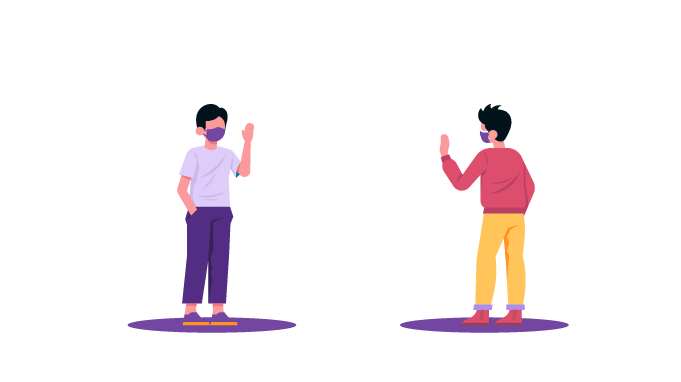
The year 2020 will forever be recalled as the one that crippled all economies. Almost every nation was seen struggling to fight Covid-19 in its own ways. Few of them have been victorious, while the rest are still fighting away the deadly virus.
Various governments all over the world tried different ways to fight Covid-19. Nudge theory was one of them too.
The UK government has a dedicated unit known as the Behavioral insights team or the Nudge unit. In fact, the US government had a dedicated Nudge unit during Obama's presidency too. The same department has been revived recently by Joe Biden's government to fight away Covid-19. Every government tried its best to apply different tactics to make people aware of the virus.
Frequent television appearances of the Indian Prime minister addressing the public were also critical nudges in spreading awareness among the masses. Also, not to mention the lighting of diyas and clapping for the frontline workers. Those were easy, inexpensive, and effortless ways to bring people together and create herd awareness.
Different types of local nudge experiments were performed by nations to urge people to follow Covid-19 norms and to get vaccinated. Some of these are-
- It was declared in the US that in order to celebrate the 4th of July, 70% of people need to get at least a single dose of vaccination.
- Krispy Kreme offered free doughnuts to people who got vaccinated.
- Text messages like "A jab has been reserved for you" were sent out to the public.
- Stickers are embossed on the floors of malls and supermarkets to maintain social distancing.
- Social distancing signs (Tick and cross marks) on seats of airports and other public places.
- Complete refund on cancellation of train tickets and removing all benefits for senior citizens discouraged people from traveling.
These were a few of the multiple tactics applied by governments to fight the spread of Covid-19. These are all very simple steps, but they have proved to be very effective.
Let's use the social distancing circles outside the stores as an example. When we are on auto-pilot mode, our brains do not always keep social distance in mind. But when we see a white circle, we are quickly prompted to keep our distance. This is why nudge is called a choice architecture that influences people's behavior.
Like any other, this theory has its own set of pros and cons too!
Hence, several governments were also criticized for adopting behavioral science to fight Covid-19. It may not have completely erased the virus, but it did help to contain it to a large extent. Most importantly, it helped in making people aware of the virus and its consequences.
Nudge And The "New World" Employee Engagement
Today's workforce is highly disengaged. Employees are not just looking for a good salary but also trying to be able to fulfill their personal goals. Although employers are trying to bridge this gap, employees still fail in maintaining work-life balance and lack trust in their jobs. Let's have a look at some numbers for the same-
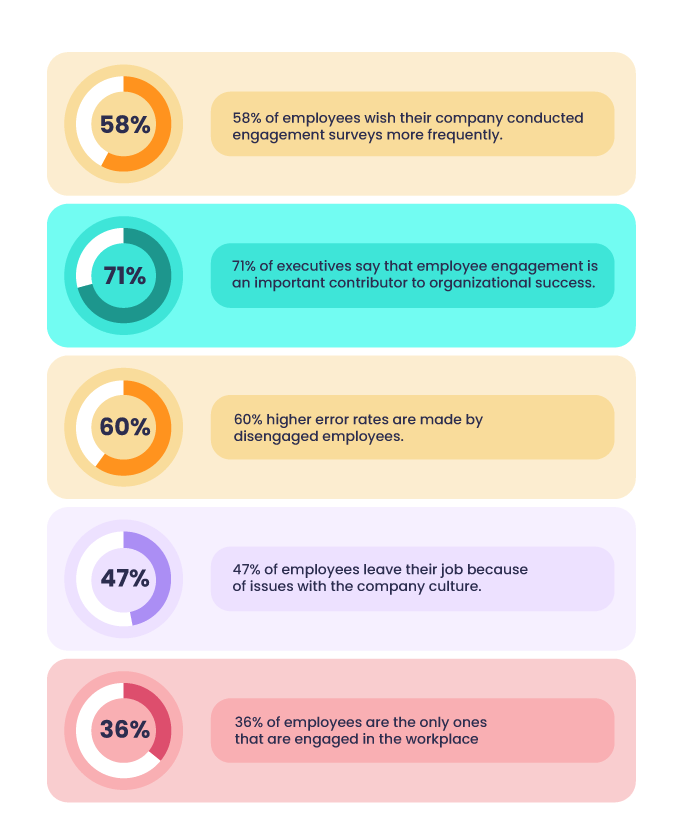
Source- (Achievers, Ehstoday, Eletive, Hrcloud)
These numbers are pretty astonishing. It shows how critical employee engagement is for an organization.
Also, with the pandemic, offices globally have shifted to remote work. This has left HR professionals with the hard task of balancing new functionalities while making sure employees are satisfied.
It is where nudges are used for employee engagement in workplaces. Nudges should be such that they are aligned with employee's job satisfaction as well as company goals.
Nudges in workplaces should be positive reinforcements, making it easier for the employees to make the right decision. It is similar to how an employee drinks more water if a bottle is kept in front of them and does not otherwise.
Building a high-performing team isn't easy. It requires great communication, transparency, and trust. Therefore, keeping employees motivated and uplifted is of utmost importance. Small nudges like rewards and recognition help a lot in keeping employees engaged and happy.
An Example Of Nudge Theory At Work
A small nudge implemented by a Fortune 500 company was the introduction of silent hours. They did so in response to the following day-to-day issues-
- Small talks and conversations when colleagues meet.
- Deadlines are not met when there are interruptions.
- There are meetings all day.
This company implemented "silent hours nudging" during a time of day when everyone is working. It meant that there would be zero interruptions or distractions no matter what. Doesn't it appear to be too simple to work?
But, this gave away a remarkable increase in employee productivity. This is how a slight nudge can do wonders when applied correctly.
Also read: 8 Ways To Increase Employee Productivity In The Workplace
Six Simple Ways to Implement Nudge Theory in Your Workplace Today
We have already seen how interesting the Nudge theory is and how a slight nudge can bring a massive change in any organization. It does not forbid any options, nor does it take away the freedom of choice. It simply makes the process of choosing easier.
Here are six different types of nudges that you can implement in your workplace today-
1. Keeping Healthy Snacks at Eye Reach
In the presence of options, human beings tend to always choose the easy and the nearest alternative. To encourage your employees to opt for healthier food habits, you can always keep the healthy snacks at an easy reach. In this way, employees will be subconsciously nudged to go for the nearest option. Alternatively, keeping junk foods at a greater distance will serve the purpose too.
2. Appreciation Notes
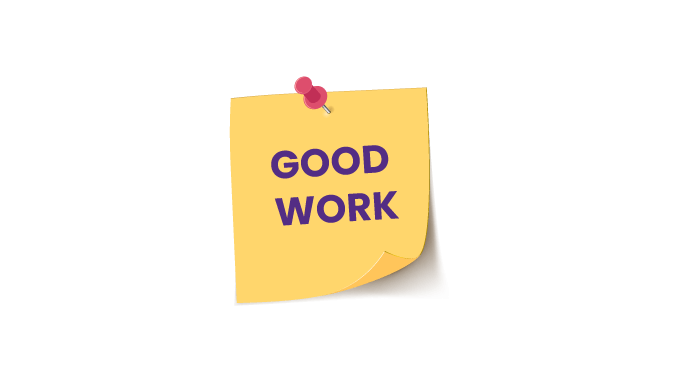
A small word of appreciation can also motivate someone or provide the nudge to do a task. It falls in the Intrinsic type of motivation. It is a slight push to get your employees to do something better. These are small nudges but go a long way!
Also read: 5 Factors That Restore The Power Of Intrinsic Motivation In The Workplace
3. Peer-to-Peer Recognition Platform
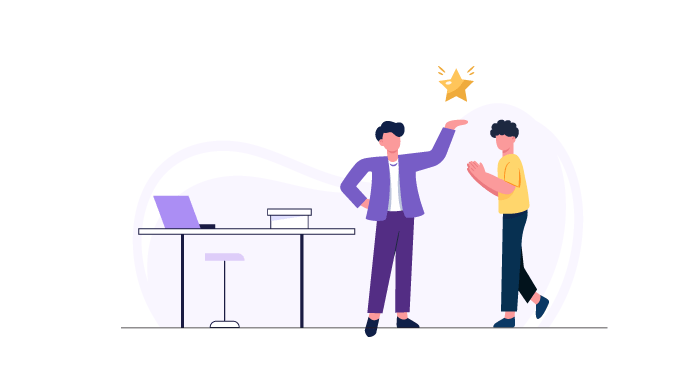
When employees see people appreciating their peers on social timelines, it will encourage them to do the same. Peer appreciations are like a domino effect. They not only motivate your employees but also push their peers to work twice as hard.
Digital recognition platforms like Vantage Rewards provide such peer-to-peer recognition opportunities. It is a multi-level approver award system that provides employees a fair and equal chance to win.
4. Visual Stairs
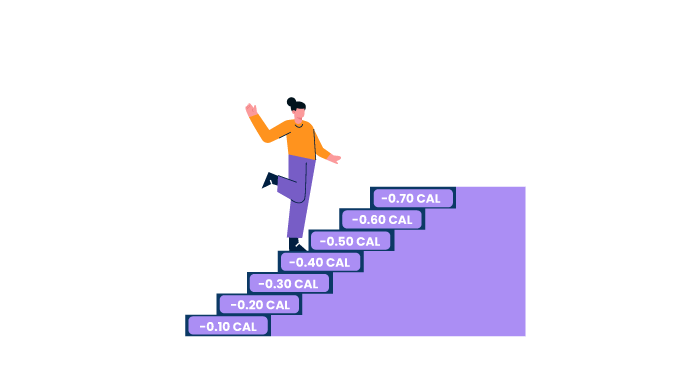
When we see an elevator and a staircase, our instant decision would be to choose the elevator. Not only is it easy, but also less time-consuming. Moreover, a drab staircase that no one uses would be gloomy, grimy, and unappealing.
But, if you can make the same staircase visually appealing or put calorie counts on the steps, the scenario flips. It will encourage your employees to burn some calories and adopt a healthier lifestyle.
5. Make Rewards and Recognition Effective.
Giving a reward or recognizing an employee's efforts can go a long way towards boosting productivity. These kinds of nudges are referred to as extrinsic motivation. Even a small gift enhances an employee's belief that their contributions are propelling the company towards success.
There has also been an ongoing debate on the topic of "Extrinsic vs. Intrinsic motivation" and which is better. But, the goal is to strike a balance between both while still appreciating your people.
6. Creating Legible Workspaces
An employee's workstation is the first thing they see when they arrive at work in the morning. A drab and repetitive same-colored wall can demotivate a creative mind.
Workplaces should be maintained and designed in such a way that they promote innovation while remaining serene. Legible and visually beautiful workspaces assist employees in focusing, boosts productivity, and make them fall in love with their workplace.
Conclusion
Thus, nudge theory is a very effective solution for workplace productivity, especially for short-term goals.
It enables employees to subconsciously choose an option without removing their freedom of choice. It's like a gentle push in the direction of a better option.
Over the years, this theory has proven effective in several organizations and government offices. Although nudges are everywhere, these organizations have taken adequate steps to design them systematically to boost productivity and influence choices.
So, what are you waiting for? Go ahead and choose the next nudge for your employees. Happy Nudging!!










